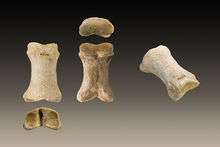Quina Mousterian

The Middle Palaeolithic or the "Age of the Neanderthals", is characterised by the occurrence of several Middle Palaeolithic cultures. One of the "lithic" or "stone" cultures is called "Quina Mousterian," one of several mousterian variants. Quina Mousterian is usually dominated by transverse scrapers and typically has a Levallois index of less than 10%.
Quina Mousterian lithic assemblages are usually found in caves. Very few Quina assemblages have been found outside cave and rock shelters. However, an important lithic assemblage, which was characterised by the presence of Quina tools and Levallois core reduction has recently been excavated at the Middle Palaeolithic valley settlements at Veldwezelt-Hezerwater in Belgium. The researchers who have excavated the Quina assemblage at the so-called "WFL site" at Veldwezelt-Hezerwater prefer to call the WFL lithic assemblage: "Levallois core reduction with Quina tools."
Quina Mousterian lithic assemblages in Southern France mostly date to the Early Weichselian (70,000-60,000BP), while Quina Mousterian lithic assemblages in Belgium mostly date to the first half of the Middle Weichselian (60,000-45,000).
A typical Quina Mousterian lithic assemblage is found in Axlor site, in the Basque Country (Spain), dated at the end of OIS3 (44,000 BP).
External links
- The Middle Palaeolithic sites at Veldwezelt-Hezerwater